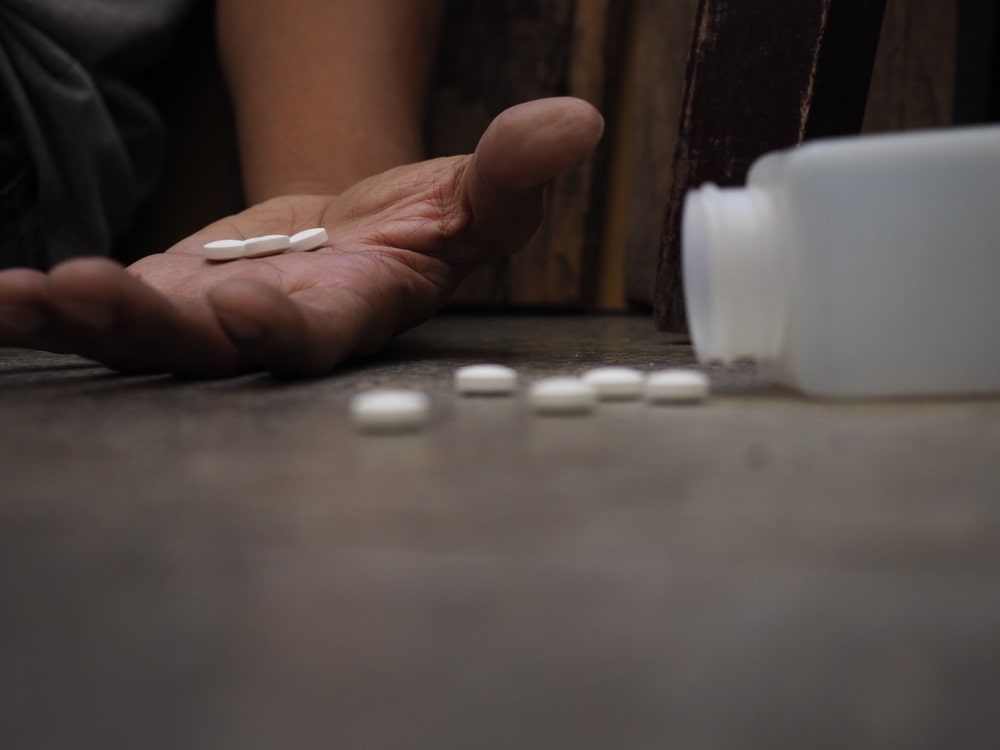Anxiety disorders are one of the most prevalent mental health conditions in the world. Despite their devastation, anxiety disorders and panic attacks are highly treatable. One of the most frequently prescribed drugs for anxiety disorders is the benzodiazepine Xanax. Although Xanax is highly effective at alleviating anxiety symptoms, the drug does come with a high potential for dependence and abuse. Even people who are not legally prescribed Xanax will abuse the drug recreationally to get high.
How does Xanax work?
Xanax is also called Alprazolam, and it was first prescribed in the early 1980s. The drug interacts with receptors in the brain, blocking certain brain activity that is known to play a role in anxiety symptoms and panic attacks. The drug works quickly, taking effect within an hour. The medication’s anxiety-dampening effects can last for up six hours, and the medication gives panic and anxiety sufferers much-needed relief. Failing to treat an anxiety disorder can severely impact a person’s day-to-day functioning, and also increases their risk of turning to illegal drugs or alcohol to cope with distressing symptoms.
Although treating an anxiety disorder with Xanax can reduce a person’s risk of turning to drugs to cope, unfortunately, Xanax can also be abused if used incorrectly. Xanax can produce a euphoric and sedating effect when it is abused. People can become addicted to these effects. A person suffering from anxiety may mistakenly believe that taking more of Xanax than prescribed can bring them relief faster.
When Xanax is taken as directed by a physician, it is safe and effective, and the potential for tolerance and dependence are minimized. But even people who take Xanax correctly can develop a physical dependence on the drug. Long-term use of Xanax may require physician-led tapering off from the drug to minimize withdrawal symptoms.

How many people abuse Xanax?
Unfortunately, Xanax abuse and overdose deaths have increased in recent years. Besides opioid prescriptions, Xanax and other benzodiazepines are the most commonly abused prescription drugs in the U.S. Studies have found that people who are prescribed benzodiazepines in combination with opioids are at ten times the risk of overdosing than people who’ve only been prescribed an opioid.
Can someone overdose on Xanax?
Yes, if Xanax is taken incorrectly or mixed with other drugs and alcohol, it dramatically increases the risk of fatal overdose. Benzodiazepines like Xanax are sedatives that decrease a person’s respiratory rate. If Xanax is taken with another drug, or with alcohol that produces the same effect, the person can overdose and die.
What are the signs and symptoms of Xanax addiction and abuse?
Someone who abuses Xanax may frequently “lose” their prescription, or run out of their prescription before they are due for a refill. They may also take the medication with alcohol or mix it with other drugs to get high. People who abuse prescription drugs may even steal family or friend’s prescriptions. Other signs and symptoms of Xanax abuse include the following:
- Lethargy and drowsiness
- Lightheadedness
- Sleeping excessively
- Impairment and poor coordination
- Cottonmouth
- Slurred speech
- Social isolation
- Missing important events, work, or school
- Increased irritability and agitation
Xanax is a central nervous system depressant and people who abuse the drug risk falling and injuring themselves, or getting into an accident if they use heavy machinery or drive while high on the drug. If someone were to take a large dose of Xanax they can potentially experience the sedative effects of the drug for several days after abusing Xanax. Xanax abuse also comes with several long-term side effects:
- Psychosis
- Depression
- Delirium
- Increased risk of permanent cognitive impairment and memory loss.
What are the signs of Xanax withdrawal and how long does it last?
Prescription Xanax has a half-life of six to twelve hours, depending on which type of prescription Xanax a person takes. There are fast-acting and slow-release tablets that can affect the withdrawal timeline. Withdrawal symptoms typically start about twenty-four hours after last use. The duration and severity of withdrawal will depend on how long a person has abused Xanax, how much Xanax they’ve abused, and if they are abusing other substance in conjunction with Xanax. Xanax withdrawal symptoms include the following:
- Mood swings
- Increased aggression and irritability
- A return of panic attacks and anxiety disorders
- Trouble sleeping
- Paranoia
- Problems with memory
- Trouble concentrating
- Experiencing intrusive thoughts and rumination
- Depression
- Hallucinations
- Headaches
- Pain and muscle stiffness
- Exhaustion
- Flu-like symptoms
- Tingling and numbness
- Intense cravings to use the drug
- Tremors
- Sweating
In most cases of Xanax withdrawal, physical symptoms will peak within a week after cessation, and subside within fourteen days after last use. Psychological symptoms can last for months, and in extreme cases, a person will have permanent memory loss or early signs of dementia from severe, long-term Xanax abuse.
Are Xanax withdrawals potentially dangerous?
Yes, Xanax withdrawal can potentially cause dangerous seizures that are potentially fatal or leave users with a permanent disability.
What can be done to treat Xanax abuse and addiction?
Treatment for Xanax abuse will depend on the severity of the addiction and if a person is a polydrug abuser. Users who also suffer from comorbid mental health disorder will need integrated treatment methods to address both addiction and their mental health. Because quitting Xanax cold-turkey can induce dangerous seizures, it’s imperative that people addicted to Xanax can safely detox from the drug under a doctor’s care and supervision. Trained medical staff can wean patients off Xanax, so withdrawal symptoms are not as intense or severe.
After a person has safely detoxed from the drug, they may need to attend inpatient and outpatient rehab for several months after cessation. During rehab, patients can participate in personalized therapy sessions to get to the root of their addiction. Therapists and doctors can also put together a customized aftercare plan for patients, ensuring that they don’t relapse back into drug addiction.
Alcohol and Xanax Not a Good Remedy for Anxiety
Since 2007, the American Psychological Association (APA) has surveyed Americans to find out what causes their stress and how they are responding mentally and physically. Factors like the economy, political unrest, and racism play a role, but the COVID-19 pandemic raised the stakes, bringing new problems and complicating the old ones. The APA says the country is facing a mental health crisis that could have lasting effects for years to come. Southern California rehab centers are seeing a dangerous combination – alcohol and Xanax.
How Stress Is Affecting Americans
As people in the U.S. struggled with the pandemic, they reported the effect anxiety had on their lives:

Alcohol and Xanax – A Lethal Combination
Xanax is an anti-anxiety medication that causes the brain to block anxiety or panic attacks. Alcohol can also reduce anxiety, but it can also cause it to return with a few hours. Some people turn to Xanax to relieve anxiety, and others prefer alcohol. Some combine the two, and that’s even more dangerous. Because alcohol and Xanax are both sedatives, they relax muscles, calm the mind, and cause drowsiness. Using them together increases their effect, and the combination slows down breathing, potentially causing coma and death.
Every year, 18% of adults report having anxiety disorders, and many of them have legitimate prescriptions for sedatives. Many also drink alcohol, and that greatly increases their risk of respiratory depression and overdose.
Ten Safe Ways to Reduce Anxiety
When it comes to alcohol or Xanax addiction, medical detox and treatment are the only safe options. Xanax withdrawal symptoms can be severe and life-threatening, and so can alcohol. There are, however, natural ways to reduce anxiety:
Southern California Rehab
It’s never safe to attempt Xanax withdrawal without help. Whether you prefer inpatient, outpatient, or telehealth treatment options after your detox, our experienced team is ready to help you tackle alcohol and Xanax addiction. Contact us today.
Updated March 30, 2021
The facilities at Mission Harbor are staffed with trained experts to best assist patients with their mental health issues. We are capable of dealing with any and all cases with a licensed staff, equipment, and approved techniques. Our mission is to help those who want to help themselves, and we support your decision in seeking help.
Get Help Now
Alcohol addiction is extremely difficult to overcome on your own.. Seek specialized help and let professionals guide you in your recovery.

